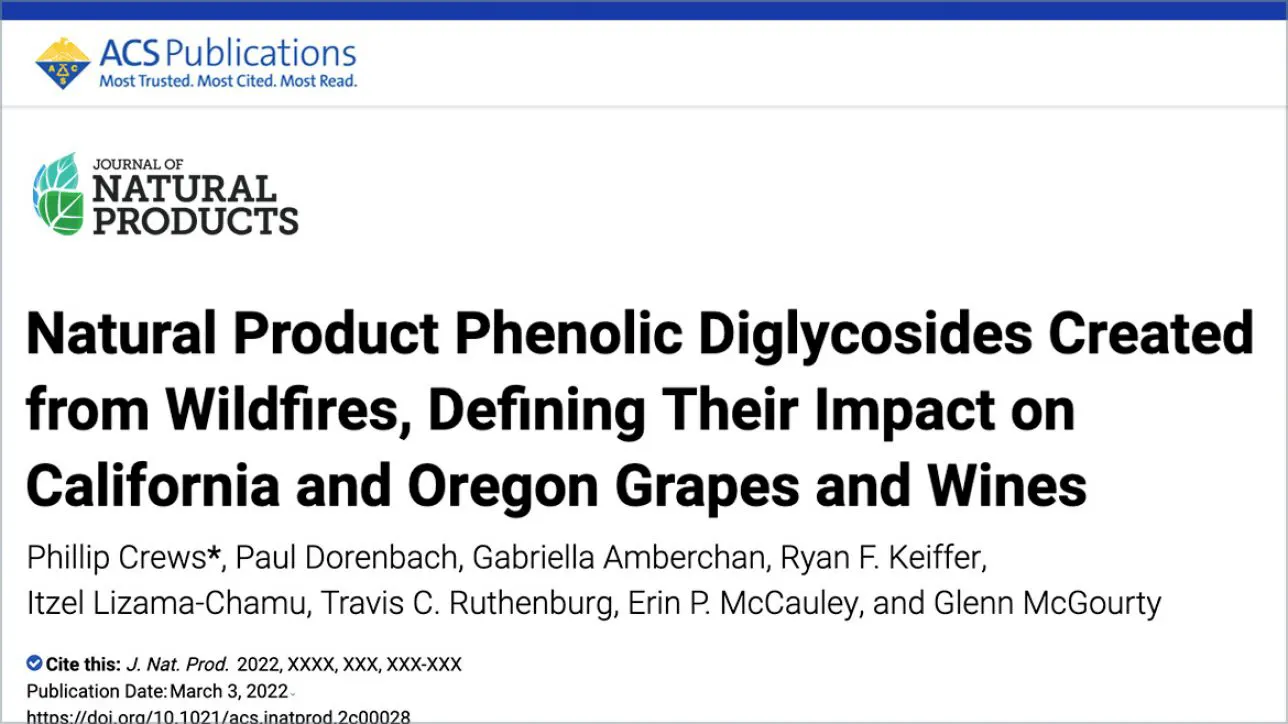Research Study, Journal of Natural Products.
Abstract
Forest fires produce malodorous phenols, bioaccumulated in grapes as odorless phenol glycosides (mono- to tri-), and produce unpleasant smoke tainted wines when these complexes are transformed by glycosidases in saliva. Metabolomic analyses were used to further understand smoke taint by quantitating marker phenolic diglycosides via UHPLC separations and MS/MS multiple reaction monitoring. A collection of grapes and wines provided data to forecast wine quality of grapes subjected to wildfire smoke infestations; the analytics used a panel of reference compounds (1–6). Overall, eight different Vitis vinifera varietals were examined from 2017–2021 vintages involving >218 distinct samples (wines and/or grapes) from 21 different American Viticulture Areas. Results acquired allowed correlation of phenolic diglycoside levels as a function of grape cultivar, varietal clones, and intensity of wildfire smoke.
This study presents some of the first quantitative measurements of PDs bioaccumulated in premium California and Oregon grapes and wines due to wildfire smoke.
Baseline data were tabulated for nonsmoked samples (especially, Cabernet Sauvignon having a sum 1–6 of <6 μg/L) and then compared to those exposed to six other levels of smoke. Outcomes established that (1) analyzing paired samples (bottled wines versus smoke-exposed grapes) can provide diagnostic metabolomic data, (2) phenolic diglycosides are stable in wines aged for >2.5 years, and (3) major gaps exist in our current understanding of this pool of metabolites.

